A Soil Health Journey Back to the Family Farm
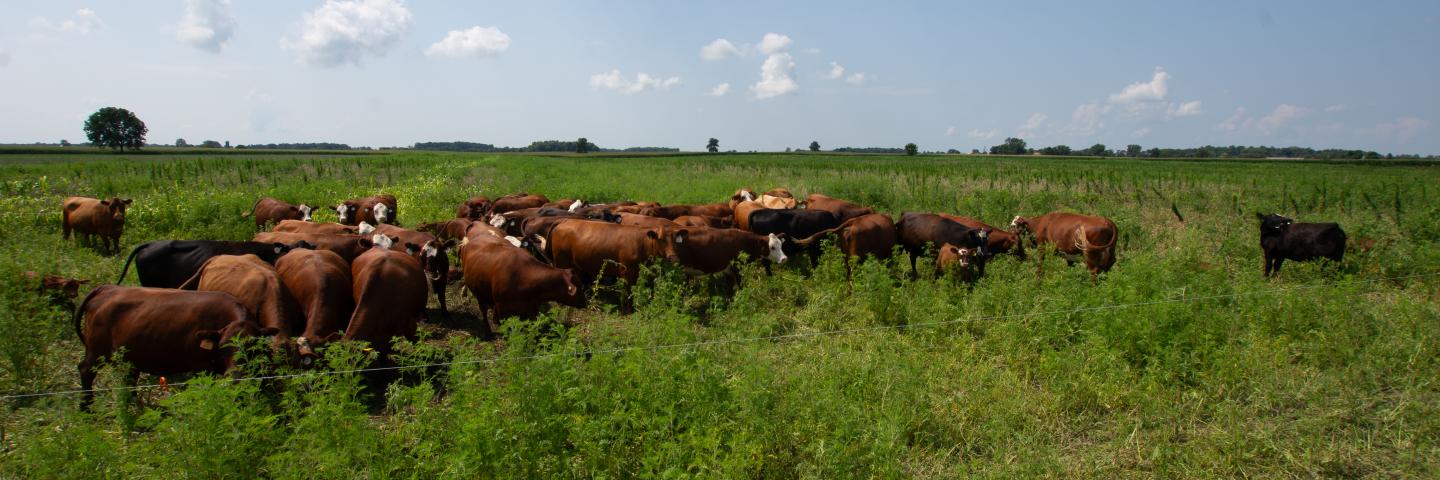
After serving 25 years in the Army, Andy Zartman returned home to take over the family farm.
Andy Zartman is a proud fifth-generation farmer on a piece of land rich with history and tradition. His great-great-grandfather acquired the original 180 acres in Fulton County in the late 1800s, which has since been cultivated by successive generations. Zartman’s two grandfathers and his father, Gary, have all contributed to the farm’s legacy. This deep-rooted connection to the land inspires Zartman as he embarks on his own journey to continue the family tradition.
Zartman’s path back to the farm was unconventional. After serving 25 years in the Army, he retired as a lieutenant colonel in 2022. His transition from military life to farming required substantial preparation. Zartman spent years researching and learning how to manage a profitable operation on the 180 acres he inherited, with hopes of passing it on to his children.
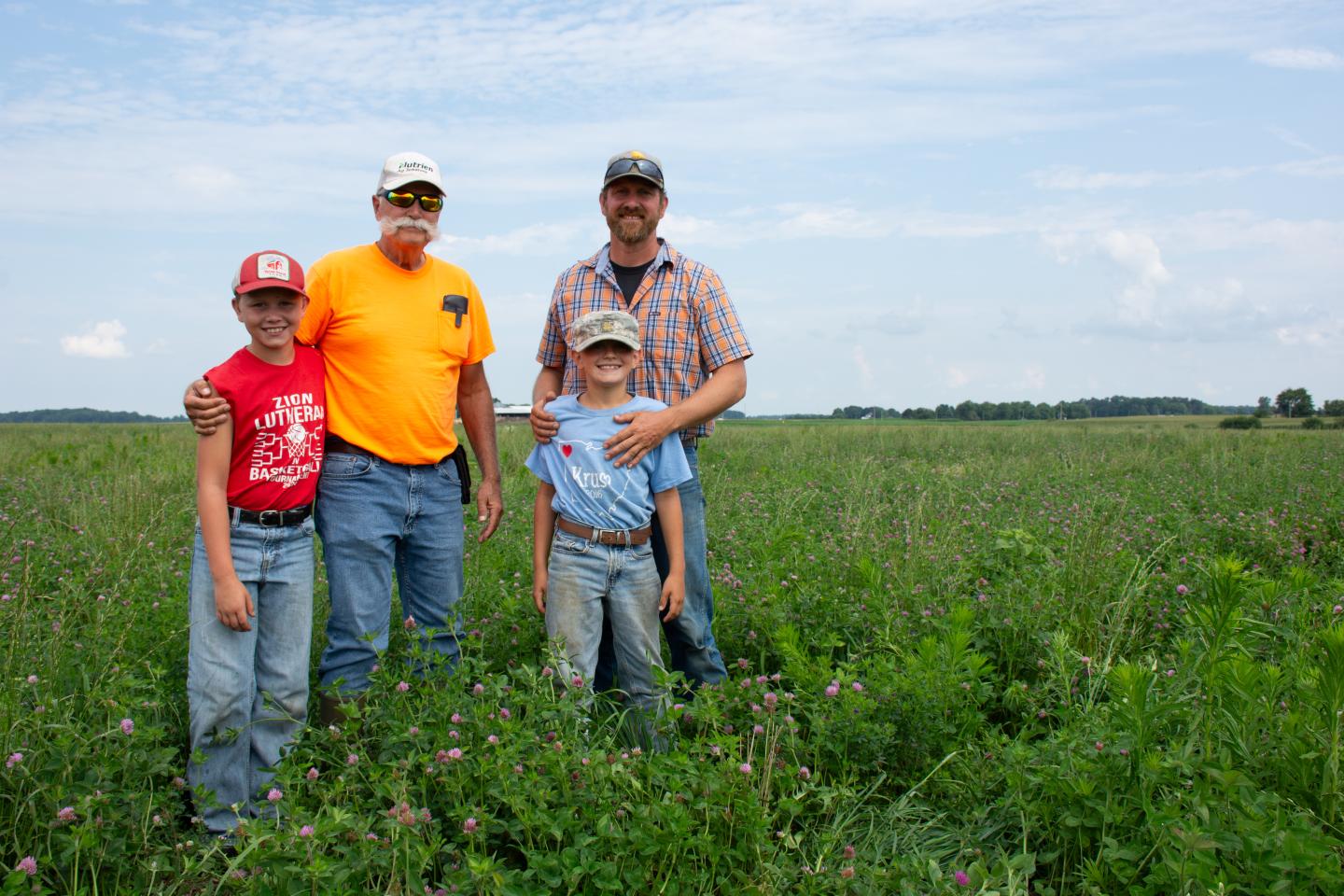
“I’ve known since the day I left the farm that I was going to come back,” said Zartman. “I’ve been planning on this for 10 or 15 years and researching soil health to try to figure out what I was going to do on this property.”
The farm is bustling with activity. Zartman manages about 50 cows, including 13 of his own, and custom grazes the rest for another farmer who runs a direct-to-consumer grass-fed beef operation. The primary breed on the farm is South Pole, known for their heat tolerance and compatibility with grass finished grazing system. In addition to cattle, Zartman is also integrating 30 sheep into the farm, introducing livestock guardian dogs to protect them.
A significant aspect of Zartman’s farming philosophy is maintaining a low-input, sustainable operation. This approach allows him flexibility and reduces reliance on extensive infrastructure while improving his soil health, a critical factor in preserving productive and sustainable pastures. Zartman’s low-input strategy is central to his goal of making the farm profitable and the practices he plans to implement are essential to promoting soil health to other farmers and consumers.
“I told my wife that I needed help to promote what we’re doing on social media so the people that care will take notice,” said Zartman. “We’re not selling anything but just want to promote the sustainable actions of soil health.”
Healthy soil acts as the foundation for robust plant growth, ensuring that grasses and other forage plants receive the necessary nutrients, water and support. By fostering a diverse and active soil ecosystem, Zartman can improve his farm’s soil’s structure, water-holding capacity and nutrient cycling. This, in turn, leads to healthier plants that are more resilient to pests, diseases and environmental stresses such as drought and flooding. Moreover, healthy soils can better support livestock by providing high-quality forage, which is essential for their nutrition and overall health.
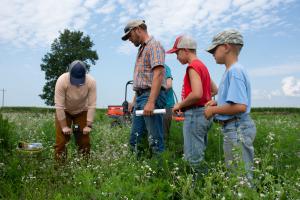
In addition to its direct benefits for plant and livestock health, maintaining soil health in pastures also contributes to broader environmental sustainability. Healthy soils can sequester carbon, reducing greenhouse gas concentrations in the atmosphere and mitigating climate change. They also play a crucial role in water filtration and retention, which helps prevent erosion, reduces runoff and improves water quality in nearby streams and rivers. By prioritizing soil health, Zartman is hoping to create a more resilient and productive agricultural system that benefits both the environment and his farming operation.
Those environmental benefits and his conservation goals led him to USDA’s Natural Resources Conservation Service (NRCS) and the Environmental Quality Incentives Programs (EQIP). Zartman had heard about NRCS from a current wetland restoration project he is planning on another property. Through discussions with his local district conservationist and other local farmers, he learned that NRCS also had assistance available that could directly help with improving his soil’s health.
Zartman applied for and received assistance through EQIP to install fencing, a well, pipelines, pasture planting and rotational grazing on his farm. Some of his pastures will also be converted into native warm season grasses to help boost the amount of forage available during the hot dry summer months and to increase plant diversity in the grazing system. He also incorporated cover crops into his operation on his own in an effort to improve his soil’s health.
“Working with a producer like Andy, who’s not only concerned about his bottom-line but who also prioritizes soil health, is one of the reasons I enjoy working in conservation,” said Andrea Baker, district conservationist for Fulton County. “Andy’s foresight to build a legacy of stewardship is so rewarding to conservation professionals like myself.”
While soil health has always been a priority on the farm, his father and his grandfathers before him never established baseline information to see if the work they were already implementing helped protect their land. So, in the early stages of his EQIP contact, Zartman collaborated with NRCS conservationists to establish baseline data and monitor changes to his pasture’s soil health over time.
Zartman is particularly interested in understanding water infiltration on different parts of the
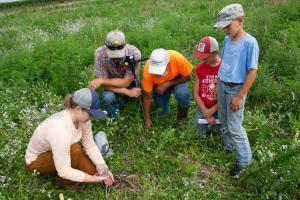
farm. He is keen on demonstrating the benefits of soil health, aiming to provide hard data to convince neighboring row crop farmers of the advantages.
“My neighbor has water standing in his cornfield and we have no water. And he couldn’t figure out why we didn’t have water standing,” Said Zartman. “We’re hoping to help him see the benefits that improving his soil health will have on his farm.”
Testing pasture’s soil for water infiltration is a useful tool for assessing soil health and ensuring the long-term productivity of the land. In August of 2024, two areas were initially tested on Zartman’s property. On the more established pasture field, initial tests showed high infiltration rates which indicates that the soil has a good structure, sufficient organic matter and a healthy population of soil organisms. These factors contribute to the soil’s ability to support plant growth by ensuring that water and nutrients are readily available to the roots. Conversely, on another, less established field, results showed slower infiltration rates which often signal compacted soil, poor structure, or a lack of organic matter, which can lead to issues such as runoff, erosion and poor plant health. These observations were also supported by an aggregate stability test. This test showed the more established field had soil structure that held up better when submerged in water verses the less established field which showed the aggregates couldn’t hold up to the submersion and fell apart.
Regularly testing soil for water infiltration and aggregate stability helps farmers like Zartman identify areas that may need improvement. For instance, in areas where infiltration rates and aggregate stability are low, this could prompt actions such as reducing soil compaction through proper grazing management and incorporating cover crops or a more diverse mix of perennial plants in the pasture system. Zartman plans to utilize his EQIP contract to implement those practices on his land and track improvements in his soil health over time.
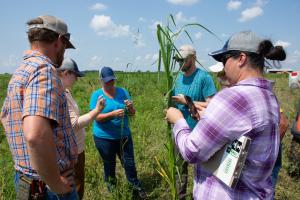
“Improving water infiltration and aggregate stability not only enhances soil health but also boosts the pasture’s resilience to extreme weather conditions,” said Indiana NRCS Soil Health Expert, Amanda Kautz. “Monitoring and managing water infiltration and soil structure on his pastures is a vital aspect of maintaining healthy soil, which underpins the overall productivity and sustainability of his operation.”
Soil health takes time and management changes to build, and Zartman is already well on his way to improving the health of his soil and sustainability of his farm. Despite the challenges, Zartman’s determination and innovative approach are paving the way for a successful transition. With support from his family and expert guidance, Zartman is poised to continue the legacy of his ancestors, ensuring the farm remains a viable and thriving operation for future generations.

